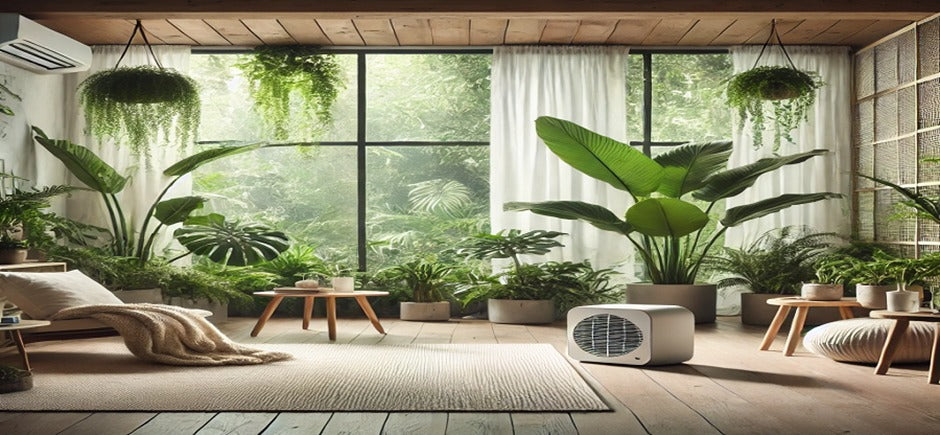As the world increasingly embraces sustainability, eco-friendly houses are becoming a popular choice for homeowners who want to reduce their environmental footprint. These homes are designed with energy efficiency, renewable resources, and environmentally conscious materials in mind. In addition to being better for the planet, eco-friendly houses often provide healthier and more cost-effective living spaces. In this article, we will explore the key features of eco-friendly houses and how they contribute to a sustainable future.
- Energy Efficiency
One of the main pillars of eco-friendly homes is energy efficiency. By reducing energy consumption, homeowners can lower their carbon footprint and utility bills. Energy-efficient designs incorporate a variety of techniques and technologies to minimize energy use.
- Insulation and Sealing: High-quality insulation and proper sealing are critical for maintaining temperature regulation in an eco-friendly home. By preventing air leaks, less energy is required to heat or cool the house.
- Energy-Efficient Windows: Installing double or triple-pane windows helps to reduce heat transfer, keeping the home warmer in winter and cooler in summer.
- Energy Star Appliances: Choosing appliances that meet Energy Star ratings ensures that your home operates with minimal energy use.
- Renewable Energy Sources
Eco-friendly houses often incorporate renewable energy sources, such as solar panels or wind turbines, to power the home. These renewable sources help to reduce dependence on non-renewable fossil fuels and significantly cut down on greenhouse gas emissions.
- Solar Power: Solar panels are one of the most popular renewable energy sources for eco-friendly homes. By harnessing sunlight, homeowners can generate clean electricity, sometimes even producing more than they need and selling the excess back to the grid.
- Wind Power: In areas with sufficient wind, small wind turbines can provide a sustainable energy solution, complementing or replacing other energy sources.
- Water Conservation
Water conservation is another important aspect of eco-friendly housing. By reducing water waste, homeowners can contribute to the preservation of this vital resource.
- Rainwater Harvesting Systems: Collecting and storing rainwater for non-potable uses, such as irrigation or flushing toilets, can greatly reduce water consumption.
- Low-Flow Fixtures: Installing low-flow faucets, toilets, and showerheads minimizes water use without sacrificing performance.
- Greywater Recycling: Some eco-friendly homes include greywater systems that recycle water from sinks, showers, and laundry for use in landscaping or other non-drinking purposes.
- Sustainable Building Materials
Choosing sustainable, eco-friendly building materials is essential when constructing or renovating an environmentally conscious home. These materials not only reduce environmental impact but also often improve indoor air quality.
- Reclaimed Wood: Using reclaimed or recycled wood helps to reduce the need for logging, preserving forests and reducing deforestation.
- Bamboo: Bamboo is a fast-growing and renewable resource that is durable and versatile, making it a popular choice for flooring, cabinetry, and furniture.
- Recycled Steel and Concrete: Utilizing recycled steel and concrete reduces the demand for new materials and minimizes the environmental damage associated with mining and manufacturing.
- Indoor Air Quality and Health
A key benefit of eco-friendly homes is the focus on creating a healthier indoor environment. By using non-toxic materials and incorporating natural ventilation, homeowners can improve air quality and overall well-being.
- Natural Ventilation: Eco-friendly homes often emphasize natural airflow by incorporating features like large windows, cross-ventilation, and skylights to reduce the need for mechanical ventilation.
- Non-Toxic Paints and Finishes: Many conventional paints and finishes emit volatile organic compounds (VOCs), which can be harmful to health. Eco-friendly houses use low-VOC or VOC-free products to maintain clean indoor air.
- Natural Flooring: Using materials like cork, bamboo, or linoleum (made from natural materials) reduces exposure to harmful chemicals often found in synthetic flooring.
- Smart Home Technology for Efficiency
Many eco-friendly homes are integrated with smart technology to optimize energy use and promote sustainability. These devices allow homeowners to monitor and control energy consumption more efficiently.
- Smart Thermostats: Smart thermostats can learn your habits and adjust heating and cooling based on your schedule, ensuring that energy is only used when needed.
- Energy Monitoring Systems: These systems provide real-time data on energy use, allowing homeowners to identify areas for improvement and reduce unnecessary consumption.
- Smart Lighting: Automated lighting systems that adjust based on occupancy or time of day can help reduce electricity use and extend the life of light bulbs.
- App Integration for Eco-Friendly Living
In 2025, technology continues to play a major role in making eco-friendly living more accessible. Many smart homes now feature mobile app integration, allowing homeowners to control their homes remotely, adjust energy settings, and monitor water usage with the click of a button. For example, using an app download, you can track energy consumption, regulate smart appliances, and control home functions even when you're away. This digital approach ensures that you can maintain an eco-friendly lifestyle with ease.
Conclusion
Eco-friendly houses represent the future of sustainable living. By focusing on energy efficiency, renewable energy sources, water conservation, and the use of sustainable materials, these homes offer a healthier and more environmentally conscious way to live. Incorporating smart technology further enhances the efficiency and convenience of eco-friendly homes, making it easier than ever to live sustainably. Whether you are building a new home or retrofitting an existing one, adopting these eco-friendly practices will benefit both your health and the planet.
Author's Bio: Sujain Thomas

Sujain Thomas is a freelance content writer and blogger who has written articles for several renowned blogs and websites about Home decor/Diy and various topics to engineer more traffic on websites.She love to decorate home in her free time























